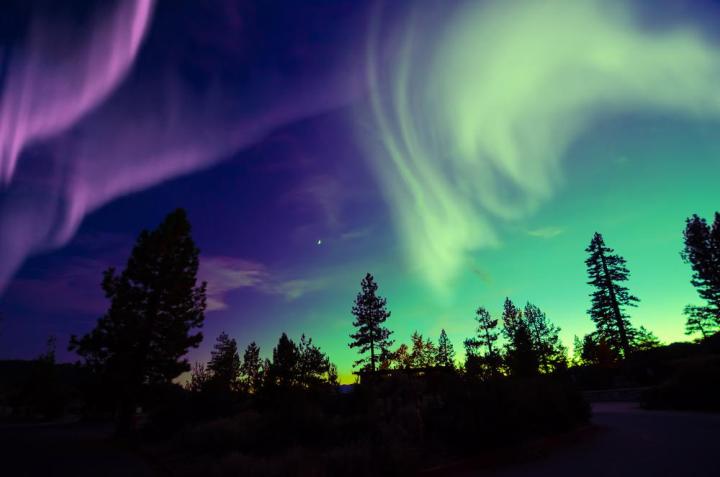
The downside of this phenomenon is that certain areas might experience outages, as the shower of electromagnetic particles could knock out satellites and other communications systems. The upside, however, is that there’s a pretty good chance that some of us might be treated to a pretty amazing light show.
When the wave of charged particles reaches our planet (which it already has, actually) it will interact with gases in our upper atmosphere and ignite a geomagnetic storm that lights up the sky. Typically, this phenomenon (known as aurora borealis) is only viewable from the northernmost regions of the globe (hence its nickname, the Northern Lights), but tonight, due to the unusually high amount of radiation caused by the recent solar flare, the lights may be visible from more southern locations this evening (Friday, September 12).
Curious if you’ll be able to see the show from your neck of the woods? Well good news — Accuweather.com has produced a speculative map of where you’ll be able to watch:

Unfortunately, based on Accuweather’s data (which we’re not sure how they obtained), it appears that the cutoff line runs right through the middle of the US, so if you live in the lower half, you’re most likely out of luck. If, however, you live in a northern state, you might actually get a good look at it later tonight.
That being said, however, visibility is dependent on a range of different factors. Cloud cover and light pollution will also play a big role in whether or not you can see the aurora tonight, so to get a better idea of where you’ll be able to watch, we highly suggest you check out some additional maps.
To get an idea of where the clouds will be tonight, pretty much any Doppler radar service will do, but we recommend Forecast.io if you want a localized, easy-to-understand cloudcover map.
To track down a nice dark area without much light pollution, head over to DarkSiteFinder.com — or just get as far away from the city as you possibly can. The further you are from civilization, the easier it will be to see the night sky.
Happy gazing!
[Images via Shutterstock, AccuWeather.com]
Editors' Recommendations
- How to watch Crew-8 arrive at the space station tonight
- How to watch NASA launch its newest ocean and atmosphere observation satellite tonight
- The 5 best telescopes for astrophotography in 2024
- The 5 best telescopes for beginners in 2024
- How to watch the Quadrantid meteor shower hit its peak tonight




